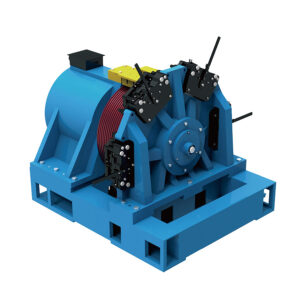Talaan ng mga Nilalaman
I-toggleTraction Elevator Components
Mga bahagi ng traksyon ng elevator are critical elements in today’s urban landscape, allowing us to move smoothly and efficiently between floors in buildings of all sizes. These systems have become indispensable, especially in high-rise constructions, where traditional elevators may fall short. Understanding how these components function and their significance provides insight into why they are the preferred choice among consumers and builders alike.
At the heart of traction elevators is the simple yet highly effective mechanism that employs a system of pulleys and cables. The main driving force lies in the traction drive, which consists of a motor that turns a sheave (pulley). This sheave grips the elevator cables, enabling it to lift the car by pulling these cables upwards, while the counterweight descends. For example, in a skyscraper, this arrangement allows elevators to move as many as 20 floors or more in a matter of seconds, offering a sense of speed and convenience for users.
One of the key advantages of traction elevator components is their energy efficiency. Unlike hydraulic systems that consume vast amounts of power, traction elevators can reduce energy costs significantly. This is particularly beneficial for building owners who seek to lower operating expenses. In residential buildings or office complexes where energy conservation is a priority, the use of these components ensures a much lower energy consumption rate, leading to substantial cost savings over time.
The importance of traction elevator components extends beyond just energy efficiency; they also offer superior performance. Because these systems utilize counterweights, they balance the weight of the elevator car, allowing the motor to exert less energy. The result is a smoother ride with less wear and tear on the equipment. For instance, a well-designed traction elevator can operate quietly and seamlessly, greatly enhancing passengers’ experience. It’s no wonder that many modern buildings are opting for this technology over others.
Application areas for traction elevator components are diverse, spanning from residential buildings to commercial and industrial settings. Hotels, hospitals, and malls are increasingly equipped with traction elevators, offering users the comfort and reliability they expect. Hospitals benefit from the smooth transition between floors as it is essential for transporting patients and essential equipment efficiently. Similarly, shopping malls take advantage of these components to manage high foot traffic, ensuring that shoppers reach their destinations without unnecessary delays.
Additionally, traction elevators are ideal for buildings with strict space constraints. Since they require less installation space than hydraulic lifts, they can fit into configurations that might otherwise be unusable. This flexibility allows architects to design buildings that maximize usable area while still including efficient transport systems. For example, an office building might integrate a compact traction elevator in a corner where a larger system would be impractical.
Furthermore, the ongoing advancements in traction elevator components are leading to even more innovative solutions. Smart technologies enable real-time monitoring and predictive maintenance, enhancing safety and usability. Imagine an elevator system that can anticipate demand, directing cars to floors with the highest traffic or alerting maintenance teams before a minor issue escalates into a major problem. Such improvements not only increase user satisfaction but also contribute to the longevity of the entire lift system.
In conclusion, traction elevator components play a crucial role in modern lift systems, providing advantages such as energy efficiency, superior performance, and broad application possibilities. Their importance in high-rise buildings, shopping centers, and hospitals can’t be overstated. As we continue to push the boundaries of architectural design and urban mobility, traction elevator components are positioned at the forefront, ensuring that we can reach new heights—literally and figuratively. Embracing these advancements not only enhances the quality of our daily lives but also shapes the future of vertical transportation.
In exploring traction elevator components, we discover a world that merges engineering excellence with practical benefits, a combination that holds significant value for both consumers and industry professionals.


